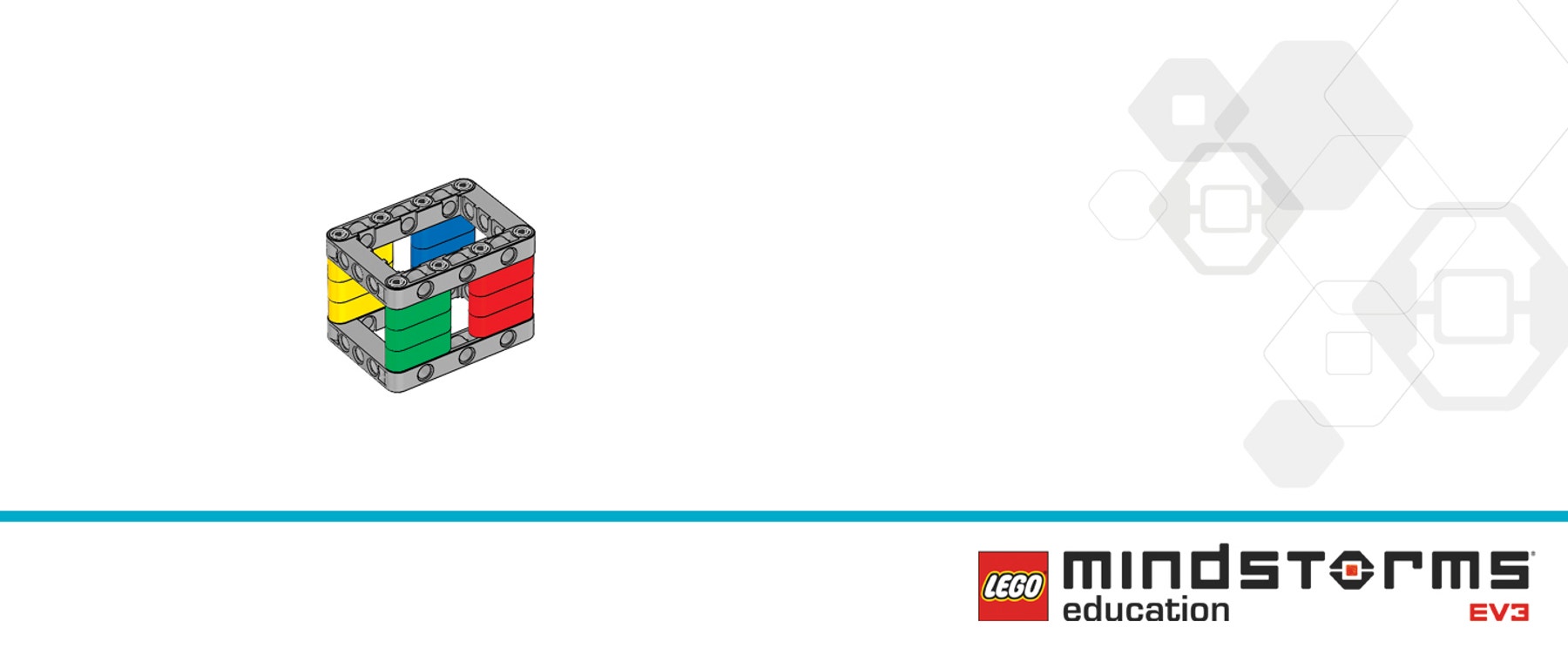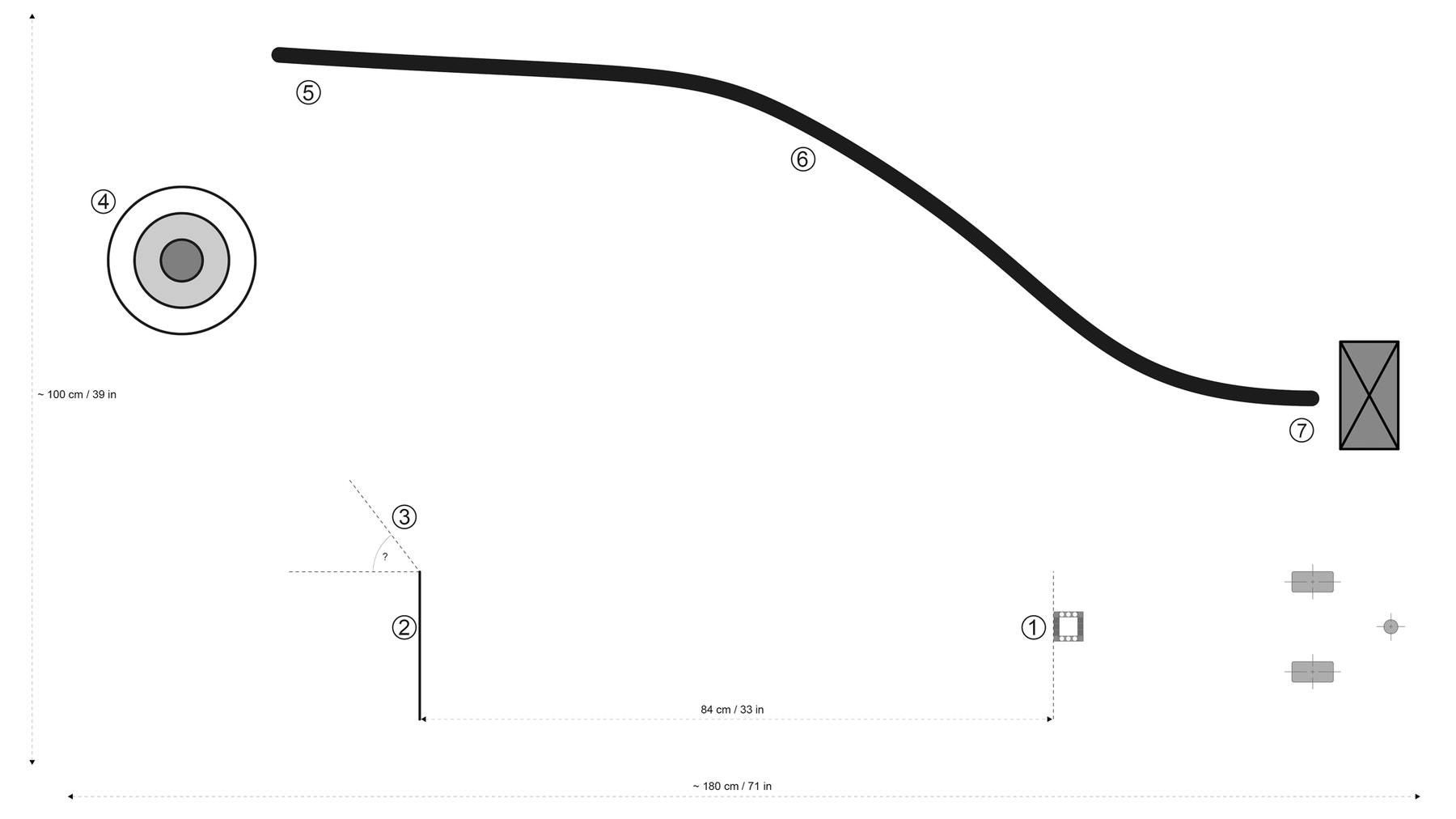The Factory Robot
Design and build extensions onto the Driving Base and program it to complete two tasks.

Lesson plan
1. Prepare
- Read through the student material in the EV3 Classroom App.
- Collect some information about the tasks autonomous wheeled robots perform in factories and warehouses.
- You’ll need black tape, markers, a measuring tape, and a large object to create the factory path for this lesson.
- It’s recommended that students complete the other lessons in this unit before beginning this challenge.
- To complete this lesson, the students will have to have built the Driving Base model, which will take about 30 minutes.
- If you don’t have double-block class time, plan to run this lesson over multiple sessions.
Part A
2. Engage (10 Min.)
- Use the ideas in the Ignite a Discussion section below to engage your students in a discussion related to this lesson.
- Split your class into pairs.
3. Explore (35 Min.)
- Have your students brainstorm ideas for extending their Driving Base so that it grabs the Cuboid and releases it in the center of the target circle (i.e., the “drop-off zone”).
- Encourage them to create multiple prototypes, exploring both building and programming.
- Allow the students time to build and test their solutions.
Part B
4. Explain (10 Min.)
- Facilitate a discussion about the key functionalities of the robot in following the line and stopping in front of the large object.
5. Elaborate (35 Min.)
- Have your students brainstorm ideas for extending their Driving Base so that it follows the line and stops as close as possible to the large object.
- Let them continue to work on their robots until they’re ready to complete the challenge.
- Don’t forget to leave some time for cleanup.
6. Evaluate
- Give feedback on each student’s performance.
- Evaluate the creativity of their solution and how well their team worked together.
- You can use the assessment rubrics provided to simplify the process.
Ignite a Discussion
One of the tasks of autonomous wheeled robots in the LEGO® factory is moving boxes between the different work stations. These fully autonomous robots even find their own way to a charging station when their battery gets low! They perform their tasks efficiently, without bumping into walls, people, or other robots.

Use these questions to engage your students in a discussion about how the Driving Base could perform similar tasks to the LEGO factory robots:
- Do you think the Driving Base could be used to perform similar tasks to the LEGO factory robots?
- Which of the extensions from the previous lessons would be useful for these tasks?
Project Brief
Design and build extensions to your Driving Base and program it to:
- Grab the Cuboid and bring it as close as possible to the center of the target circle and then release it.
- Detect and follow the line, and stop as close as possible to the large object, without touching it.

Building Tips
Open-Ended Solutions
This project is designed so that every team can have a unique solution. Use these questions to help the teams brainstorm ideas for solving the project brief:
- How could the robot navigate to the center of the drop-off zone?
- How could the robot stop following the line as close as possible to the large object?
Setting Up the Factory Path
To create the path illustrated below, the students will need black tape, markers, a measuring tape, the Cuboid, and a large object to place at the end of the black line. The measurements given are only meant as suggestions and can be loosely followed. However, the example solution and solution program are based on these measurements.

Example Solution
The example solution combines the following extensions:
Using the Gyro Sensor
The Gyro Sensor must be completely motionless while it’s being plugged into the EV3 Brick and during start-up of the EV3 Brick. If the Gyro Sensor’s angle readings change while the Driving Base is standing still, unplug the sensor and plug it back in.
Coding Tips
Solution Program

Differentiation
Simplify this lesson by:
- Working side-by-side with your students to help them figure out how to stop following the line when the large object is detected
- Suggesting that the students revisit the previous lessons in this unit
- Allowing the students to drive toward the large object without following the line
- Encouraging peer-to-peer learning and coaching
Take this lesson to the next level by:
- Challenging the students to drive forward exactly 84 cm/33 in after picking up the Cuboid and then use the Gyro Sensor to point the robot toward the target circle
- Using tape of a different color than what was used in the Colors and Lines lesson
Assessment Opportunities
Teacher Observation Checklist
Create a scale that matches your needs, for example:
- Partially accomplished
- Fully accomplished
- Overachieved
Use the following success criteria to evaluate your students’ progress:
- Students designed a robot that meets the requirements of the project brief.
- Students came up with creative solutions and considered multiple solutions.
- Students worked together as a team to complete the challenge.
Self-Assessment
Have each student choose the level that they feel best represents their performance.
- Bronze: I did the best I could under difficult circumstances.
- Silver: I had a few accidents along the way, but I still completed one of the tasks.
- Gold: I’ve completed both tasks with excellent results.
- Platinum: I’ve not only completed both tasks, but I’ve also added features that were original and effective.

Language Arts Extension
To integrate language arts skills development, have your students:
- Create a presentation or a video highlighting their robot’s features and performance
- Create a presentation explaining some of their program’s most important features
Note: This will make for a longer lesson.
Career Links
Students who enjoyed this lesson might be interested in exploring these career pathways:
- Information Technology (Computer Programming)
- Manufacturing and Engineering (Pre-Engineering)
- Science, Technology, Engineering & Mathematics (Engineering and Technology)
Teacher Support
Students will:
- Demonstrate their skills in solving a challenge
LEGO® MINDSTORMS® Education EV3 Core Set
EV3 Classroom App
Black tape
Markers
A measuring tape
A large object
Protractor (optional)
NGSS
MS-ETS1-4
Develop a model to generate data for iterative testing and modification of a proposed object, tool, or process such that an optimal design can be achieved.
Common Core
CCSS.ELA-LITERACY.SL.6.1
Engage effectively in a range of collaborative discussions (one-on-one, in groups, and teacher-led) with diverse partners on grade 6 topics, texts, and issues, building on others’ ideas and expressing their own clearly.
ISTE
4B
Students select and use digital tools to plan and manage a design process that considers design constraints and calculated risks.
7C
Students contribute constructively to project teams, assuming various roles and responsibilities to work effectively toward a common goal.




